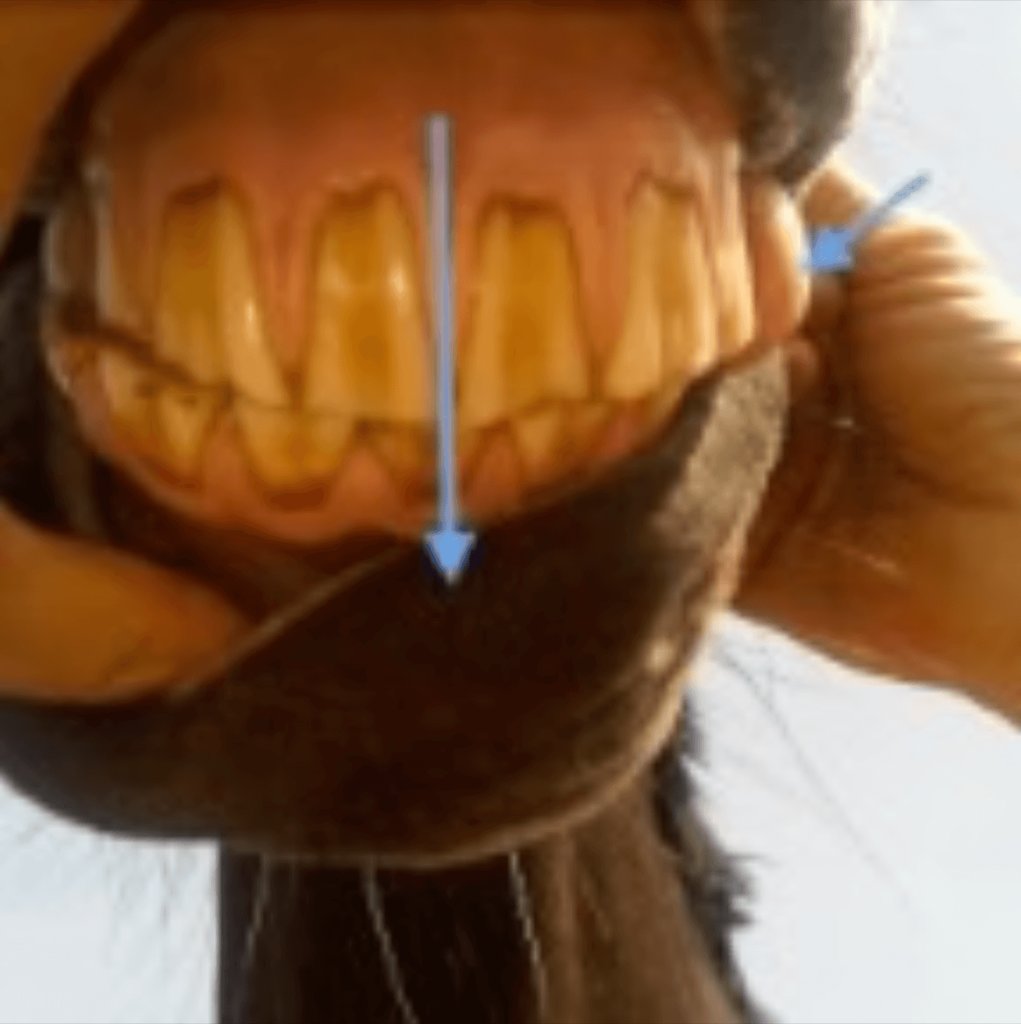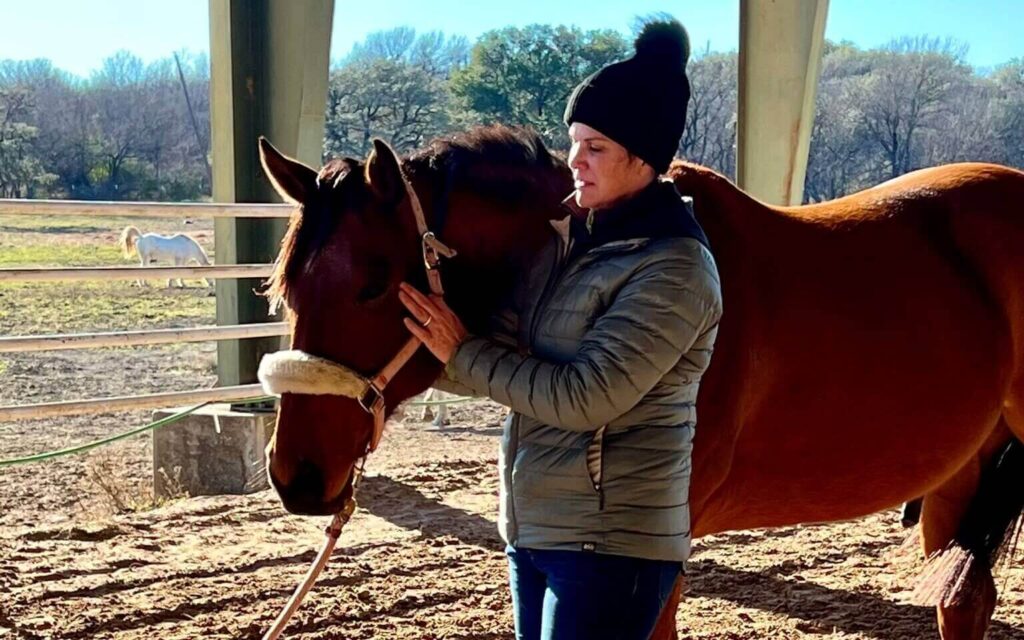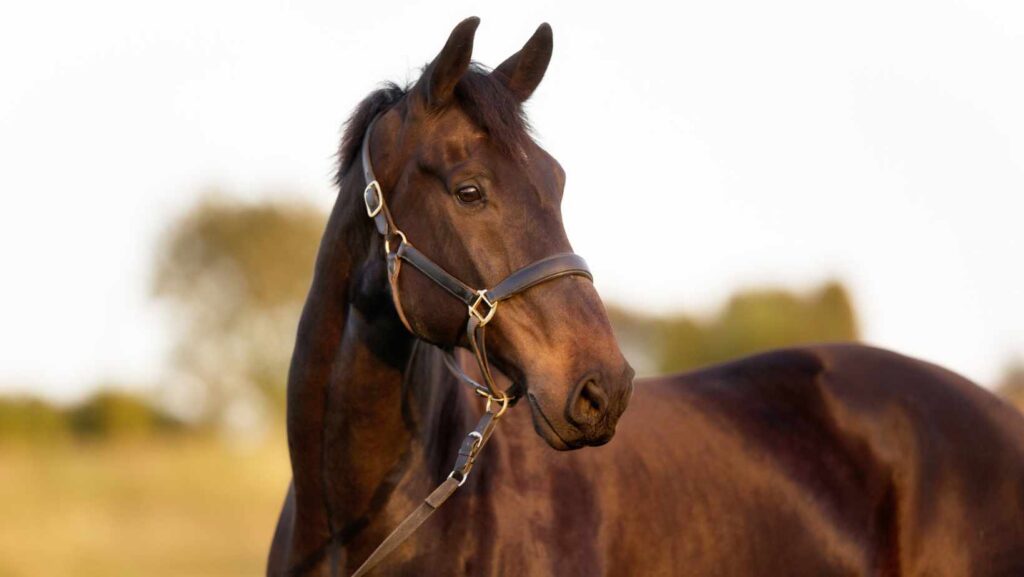TMJ in Horses: Causes, Symptoms, and Treatment

What is the Temporomandibular Joint (TMJ) and why does it matter?
TMJ pain, which mostly involves soft tissue and ligament strain, can lead to posture imbalances affecting other joints in the body. Imbalance and pain in this joint can turn into TMJ dysfunction (TMD), which is remodeling of the joint and distortion of other bones in the cranium. This is a serious concern affecting our horses today. TMJ issues can result in ulcers, colic, lameness, and performance issues, just to name a few.
The Temporomandibular Joint (TMJ) is where the mandible articulates with the temporal bone, and might just be the most critical and most complicated joint in a horse.

The TMJ is a fast changing joint, and the closest moving joint to the brain. The TMJ is highly innervated, and consists of structures that dictate the horse’s balance and sensory perceptions.
The quality of feedback in the nervous system is affected by the health of this joint. There is an intricate web of information weaving throughout the TMJ, throat latch, and poll that directly affect biomechanics and neurology of the whole horse.
Another importance of the TMJ, is its relationship to c0, c1 and c2, also known as “the poll”. The axis of rotation for the mandible (jaw) is at the first 3 joints in the cervical spine, according to Guzay’s theorum. So TMJ affects the mobility of the neck, and the neck affects the mobility of the TMJ.
Basic equine TMJ anatomy
The equine temporomandibular joint is formed by the articulation of two main bones: the temporal bone of the skull and the condylar process of the mandible (lower jawbone).
Between this joint is a fibrocartilage disc that cushions the joint while the horse masticates (chews).
Several key structures make up the basic equine TMJ anatomy:
TEMPORAL BONE:
This bone is part of the skull and forms the upper portion of the TMJ. There is a smooth depression in the anterior root of the zygomatic process of the temporal bone called the glenoid fossa where the condylar process of the mandible fits.
A portion of the temporal bone has a piece called the petrosal bone that houses the ear canal, and is also an attachment for the stylohyoid of the hyoid apparatus. In the equine skull, this part of the temporal bone has movement because the horse’s ears move, and the hyoid is a jointed apparatus that also has attachments to the tongue and the pharynx.
The temporal bone also forms a portion of the eye socket.
CONDYLAR PROCESS:
This is the curved, bulbous end of the mandible that fits into the glenoid fossa of the temporal bone. It is covered with cartilage to reduce friction during movement.
ARTICULAR DISC:
Just like in human TMJs, horses also have an articular disc between the condylar process and the glenoid fossa of the temporal bone. This disc helps absorb shock and provides cushion and stability to the joint during movement.
LIGAMENTS:
The TMJ is supported by various ligaments that help stabilize the joint and limit excessive movement. These ligaments include the stylomandibular, sphenomandibular, and temporomandibular ligaments.
MUSCLES:
Several muscles are attached to the mandible and play a role in controlling its movement. The masseter, temporalis, and pterygoid muscles are among the major muscles that contribute to jaw motion. The lateral pterygoid muscle has an insertion onto the articular disc of the TMJ.
NERVES AND BLOOD VESSELS:
The TMJ region is rich in nerves and blood vessels that provide sensory and motor functions to the muscles and structures around the joint.
FORAMEN:
These are small openings in the cranial bones that allow passage for cranial nerves and blood vessels. The temporal bone has multiple foramen for both motor and sensory nerves, and the mandible also has a foramen which innervates the lower jaw and teeth. These openings easily get distorted from tight muscles or fascia, cranial bone compression, and TMJ tension.
The TMJ primary functions
The TMJ has two primary functions, mastication (mandible) and balance (temporal bone). Any change in bite or movement of the jaw, will cause change in the joint.

Symptoms of TMJ Issues in Horses
- Clicking/Popping/ Grating noises during occlusion (chewing) or yawning.
Muscle spasms around the jaw.
Pain/sensitivity around the ears – issues with bridling.
Difficulty opening the mouth or yawning properly
Headache look or tight expression
Issues with hearing – the horse may become sensitive / heightened to sound
Spooky behaviour. Or do the opposite and shut down / dissociate
Jaw malocclusion – Upper and lower incisors, check
Throat problems – swallowing (or choke) – excessive movement of jaw / tongue or difficulty moving jaw/tongue
Thoracic sling tightness, affecting the respiratory system also
Neck stiffness, shoulder pain, back pain
Head shaking
Tongue biting
Cribbing
Difficulty taking the bit
Limited ear movement
Limited eyeball movement
Head or jaw shyness
Chewing on only one side
Popping or clicking while chewing
Blocked tear ducts
Head tilt (a more serious symptom that could be neurological)
Neurological symptoms
Causes of TMJ problems in horses
Any change in bite or movement of the jaw, will cause change in the joint. The muscles and ligaments associated with mastication (chewing), also attach to other important bones in the cranium.
So when a horse is not chewing correctly, this will cause muscle tightness or weakness that will literally pull on the bones in the cranium – most importantly, the bone that the brain and pituitary gland rests in, called the sphenoid bone.
Muscle restrictions also cause tightness in the fascia which can distort the cranial nerve foramen.
Therefore, TMJ dysfunction can affect the central nervous system, causing a slew of issues, even hormonal, that might be considered unrelated.
Common contributors of TMJ dysfunction are:
Tight bridles – nosebands, any flexion increases pressure on crown piece
Bridle straps that lay on the cranial nerves
Poor dentistry that over floats the lower molars and ignores the incisors
Lack of dentistry
Pulling back while tied
Emotional stress while riding (any tension in the jaw)
Bracing against reins, equipment that forces a head set
Head injuries
Ear twitching
Muzzle twitching
Lack of natural grazing
Unnatural eating positions
Uneducated riders with heavy bits
Injuries in other parts of the body, especially the neck or shoulder
Sore feet

What signs will my horse have if it has TMJ pain?
Sometimes it is obvious when this joint is aggravated with visible swelling or heat.
But other less obvious signs might be attributed to training problems, such as bucking, rearing, sticking the tongue out while being ridden, spookiness, ear sensitivity, head shyness, head tilting, biting difficulty, flexion difficulties, and difficulties engaging core muscles or hind end, difficulty changing leads, cribbing, teeth grinding, head shaking.
And then there are bodily signs that could be TMJ problems such as muscle wasting, poor keeper, difficulty putting muscle on top line, imbalanced gaits or lameness, back pain and/or neck pain.
And another sign is uneven wear of teeth. Sometimes the previous dentist is blamed when in fact it is a function of poor jaw mechanics or an unknown injury in the neck or shoulder.
How to Test for and Diagnose Equine TMJ disease
How do I check if my horse’s TMJ is sore?
One way to tell if your horse is suffering from TMJ dysfunction is to palpate the actual joint and surrounding areas.
Take your finger tips and trace around the temporal bone, feel the joint space between the temporal and mandible, and gently press. If your horse is sore, he will move his head away or flinch away, or not want you to touch them. Also gently feel around the base of the ears, the poll area for any soreness.
You can also palpate the masseters and temporalis muscles. They should feel like a healthy muscle. Many horse’s masseters feel like the consistency of a rock.
The masseters and the temporalis muscles should be symmetrical from left to right. If these muscles are hard, tight, feel like cords or cables, or one side is bigger than the other, there is most likely a dysfunction in their TMJ.
If the temporalis and masseters have the opposite look and are bulging or over developed, it could be a sign that the lower molars are being over floated causing too much lateral motion in the jaw.
This will also cause the TMJ to be sore due to ligament overuse. Any professional doing dentistry on your horse should be checking the TMJ too.
If your horse tolerates it, you can help bring blood flow and function back to these muscles by simply massaging them. Most horses love their masseters and temporalis muscles massaged!
Below is a short video how. Basically use your finger pads, not the tips. Stand on the side of your horse facing forward like I am in the video, put your hands on both masseters and press in and hold. You can also press in and give a slight downward “pull”.
Don’t start too high on the muscle as there are facial nerves. Think lower on the belly of the jaw. Use pressure that your horse will tolerate, sometimes that means starting with just a light touch.
Practice on yourself too. Your masseters are right in front of your ears on the sides of your jaw. Not in the hollows of your cheeks.

Treatment and prevention of equine TMJ disease
Is TMJ dysfunction treatable?
TMJ issues are treatable in most cases. Depending on how severe the problem is, finding a neuromuscular dentist, or a dentist who understands how to balance the teeth to the TMJ, including the incisors, is crucial to healing the joint.
Craniosacral is one of the most useful treatments of TMJ issues as it specifically addresses the bones and soft tissues of the skull. And if the issue is from tight or poor fitting bridles, this can be treated by changing the head gear and focusing on relaxing the jaw.
What can we do to prevent TMJ problems?
A good dentist that understands balancing the teeth to the joint is key to the health of the TMJ. One that leaves the horse’s head in a natural position as they work on the teeth,and gives plenty of breaks with the speculum.
Also a well fitting bridle that leaves ample space around the ears including behind the ear, avoids the joint and facial nerves, and that is not tight around the nose will also help prevent issues at the TMJ. Teaching your horse to tie without pulling back (blocker tie rings are good to use), and avoiding the use of equipment that keeps the head in a set position will help keep this joint healthy.
Addressing any injuries to the neck and shoulder with body work, and regular craniosacral visits will help relieve any head compressions or tensions that occur with regular riding or driving. Allowing natural grazing and play with other horses.

Beyond the physical
The body stores overwhelming experiences in tissue memories. Jaw clenching and TMJ tension will therefore be storing emotional and physiological tension.
There is a spiritual and emotional aspect of the TMJ due to the parasympathetic, sympathetic, and social safety system of the cranial nerves that innervate directly and indirectly with the TMJ system. The jaw is the most emotionally invested bone as well.
Emotions are reflected in mandible movement, such as anger, stress, peace, calmness, etc. When the jaw is restricted in movement, it has a physical effect and an emotional effect on not only the body, but also the mind and spirit of the horse.
So, in short, the TMJ can be linked to psychological and physical issues, internal organ imbalances, and body compensations, due to the fact that the nervous system is associated with this delicate joint.
If there are repeated areas that come up sore such as hocks or stifles, or they need repeated osteo adjustments in the same location, it could be that your horse is stuck in compensation. And the TMJ is one area of the body that may be attributing to this.
Conclusion
In over 15 years of practicing equine craniosacral, it is very rare that I come across a horse who has a healthy TMJ. Every dissection I have attended, which has been at least 12, all of the horses had torn or frayed discs in their TMJ, uneven wear in the joints, and dry or unhealthy fascia around the muscles of mastication.
The most settled TMJ’s are found in horses who receive a balanced dentistry. There have been some informal studies done on tight nosebands causing strain in the TMJ, and even heating up the temperature of the eyeballs.
Ear movement and also eye motion can become restricted with TMJ dysfunction. Once you learn to recognize these subtleties, you can begin to help your equine friend find relief.







[…] […]
[…] […]
[…] […]
[…] […]
[…] […]